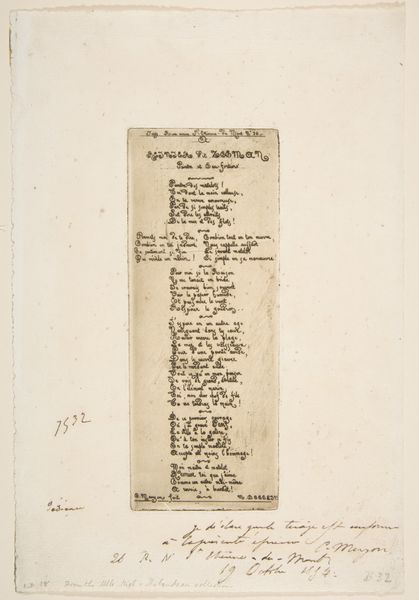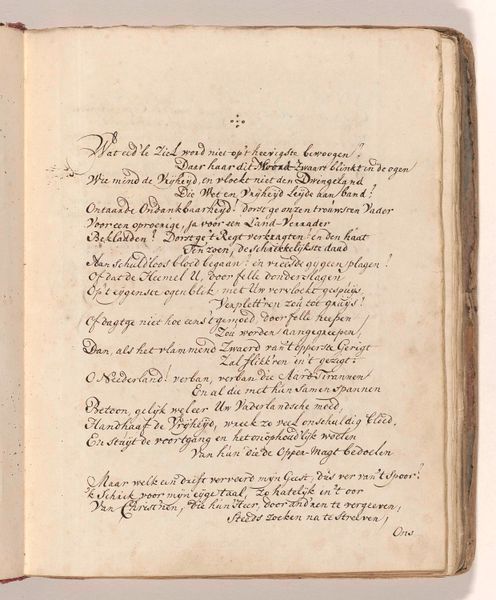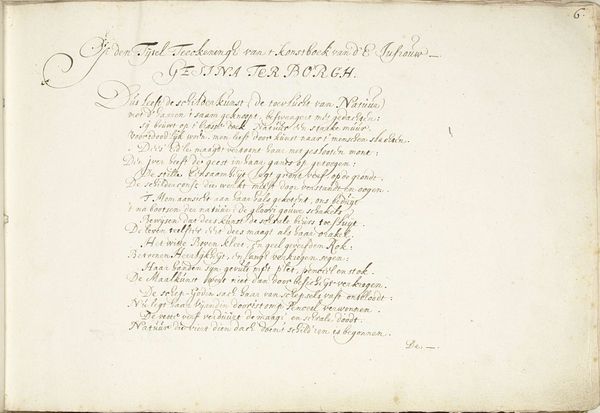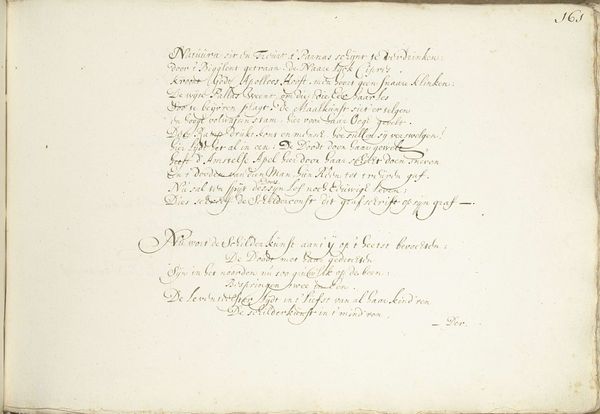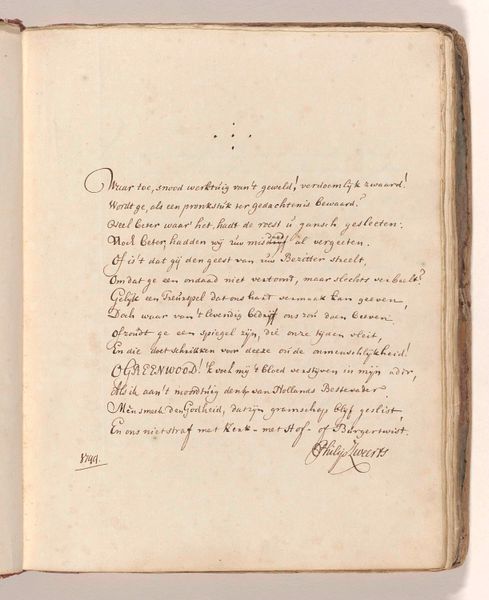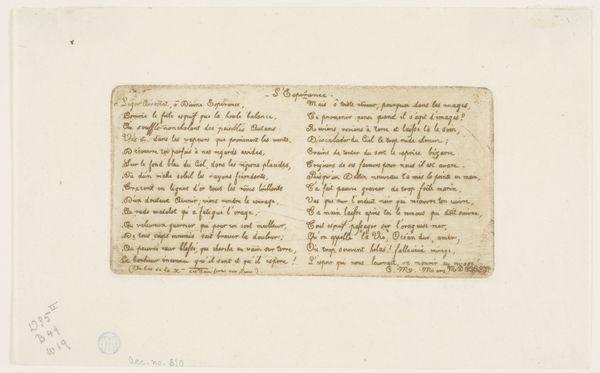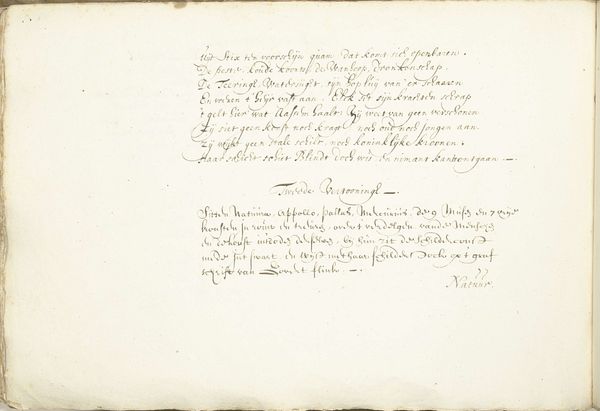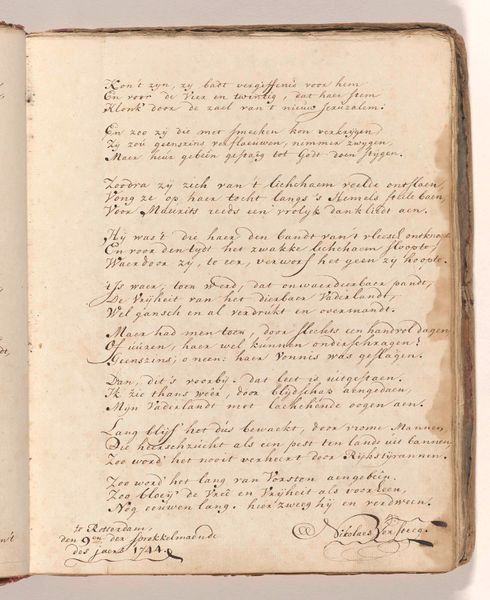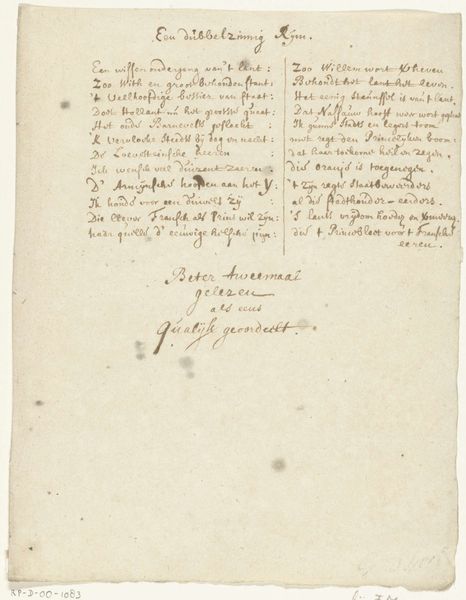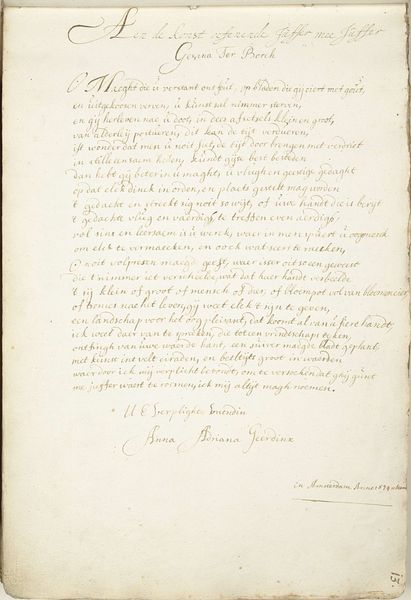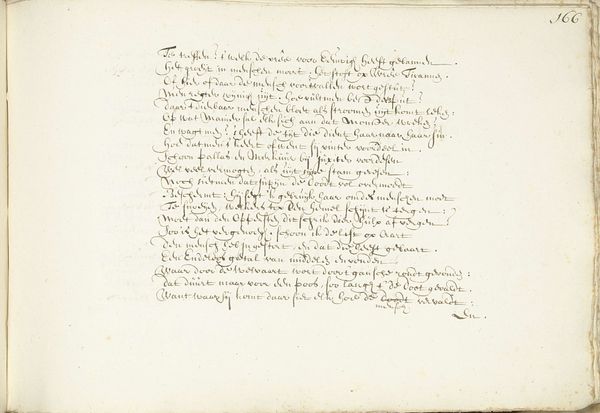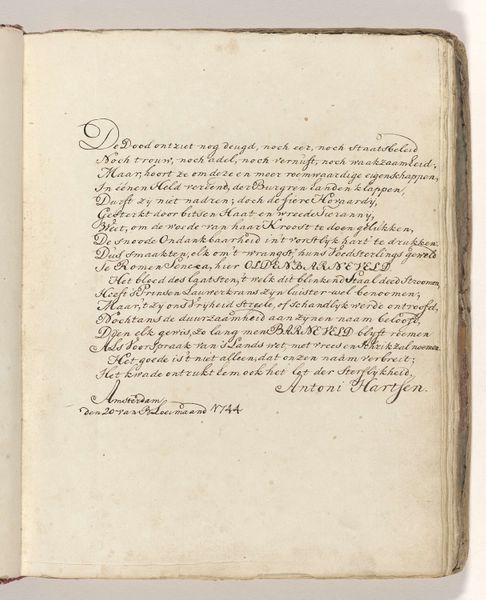
Vers a Eugène Bléry, No 2 (Verses dedicated to Eugène Bléry, No 2) 1854
0:00
0:00
Dimensions: plate: 5 x 2 11/16 in. (12.7 x 6.8 cm)
Copyright: Public Domain
Editor: Here we have Charles Meryon's "Vers a Eugène Bléry, No 2," created in 1854 using ink on paper. It looks like a handwritten dedication or a poem…it's very intimate, yet the added notes around it feel almost bureaucratic. What does this piece tell us about art and its reception in that period? Curator: It’s fascinating how Meryon presents this dedication, isn't it? Let’s consider the function of a dedication in 19th-century artistic circles. These were not simply personal notes; they were often performative acts of social and professional networking. The carefully inscribed verse is presented almost as an artwork itself, yet it is framed by seemingly unrelated annotations, blurring the lines between public and private, artistic and administrative. Do you think that this merging of art and function may have broader cultural significance? Editor: That's interesting! It sounds like these dedications could potentially be political acts? Perhaps the annotations served a very public purpose by controlling and limiting access to the poem. Is there something specific in the visual style or materials used that alludes to it? Curator: Precisely! The deliberate choice of printmaking, rather than a more spontaneous medium, speaks volumes. Prints were easily reproducible, which is the intention, but, here, each one is an unqiue print, as only so many will be hand-signed by the artist. Given printmaking’s association with mass communication and democratization, what tensions might arise when it's used to convey something intensely personal? Think about who was commissioning art in the 1850s and their expectations. Editor: I hadn't considered the implications of printmaking for such a personal message. So it’s like a carefully crafted image designed to position Meryon and Bléry within a specific social and artistic framework of the time. Curator: Exactly! It reveals the complexities of artistic patronage, the delicate dance between creative expression and social positioning. It's a reminder that art always operates within specific social, political, and institutional contexts. Editor: Thanks! That’s helped me think beyond the surface of the poem, and consider how it's speaking to, and working within, a particular network of relationships.
Comments
No comments
Be the first to comment and join the conversation on the ultimate creative platform.
